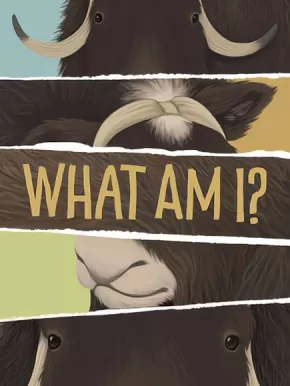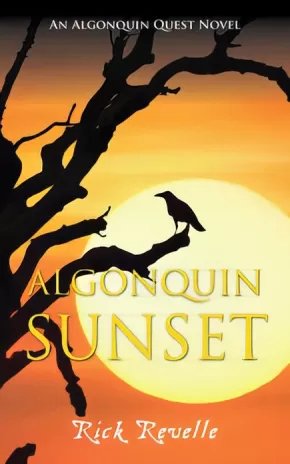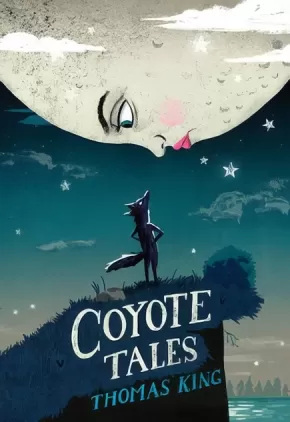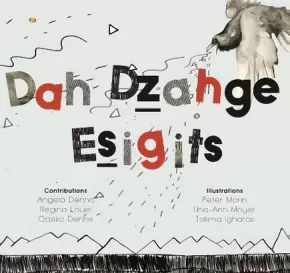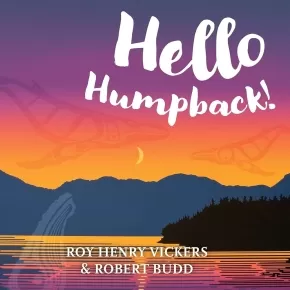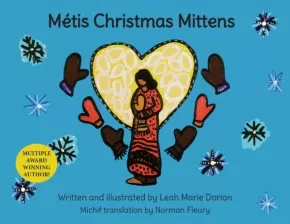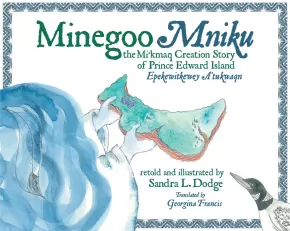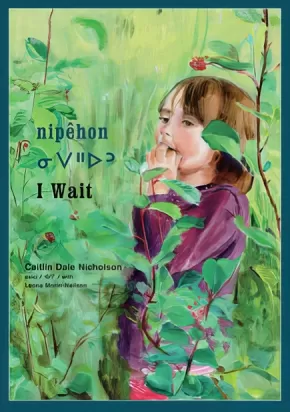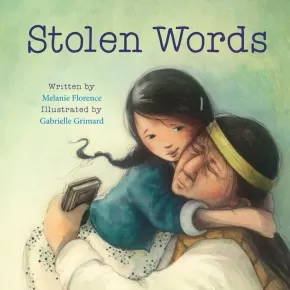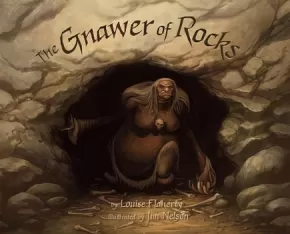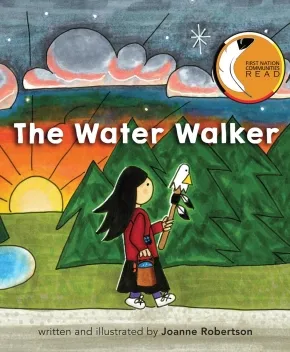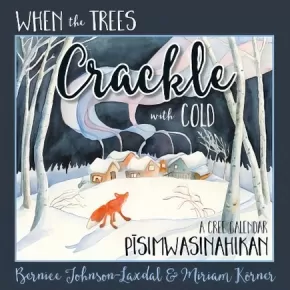
English Language Arts
151
-
165
of
186 Results;
Sort By
Go To
of 13
Una Huna? What Is This?
$16.95
Artists:
Format:
Hardcover
Text Content Territories:
Indigenous Canadian; Inuit;
ISBN / Barcode: 9781772272260
Synopsis:
Synopsis:
Ukpik loves living in her camp in the North with her family and she especially loves thinking up names for her brand new puppy. When a captain from the south arrives to trade with Ukpik's father, she's excited to learn how to use forks, knives, and spoons.
At first, Ukpik enjoys teaching the other children how to use these new tools. But soon, she starts to wonder if they'll need to use the new tools all the time, and if that means that everything in camp will change.
After a conversation with her grandmother, Ukpik realizes that even though she will learn many new things, her love for her family and camp will never change - and it even inspires her to find a name for her puppy!
Educator Information
Recommended in the Canadian Indigenous Books for Schools 2019-2020 resource list as being useful for grades K-3 in these subject areas: English Language Arts and Social Studies.
This book is available in French: Una Huna?: Qu'est-ce-que c'est ?
Additional Information
36 pages | 8.00" x 9.00"
What Am I? - Nunavummi Reading Series
$7.95
Artists:
Format:
Paperback
Grade Levels: Preschool; Kindergarten;
ISBN / Barcode: 9781772668346
Synopsis:
Synopsis:
Can you guess what the animal is?
This book shows close-up illustrations of parts of an animal and asks readers to guess what the animal is.
Educator Information
This book is part of the Nunavummi Reading Series, a Nunavut-developed series that supports literacy learning while teaching readers about the people, traditions, and environment of the Canadian Arctic. It is a Level 5 book in the series.
Nunavummi Reading Series books have also been officially levelled using the Fountas & Pinnell Text Level Gradient™ Levelling System. This book's F&P Level is A.
Recommended for ages 3-5.
Additional Information
8 pages | 6.00" x 8.00"
What Arctic Animals Eat - Nunavummi Reading Series
$7.95
Format:
Paperback
ISBN / Barcode: 9781772668636
Synopsis:
Synopsis:
Find out what animals eat in the Arctic.
This book shows the different kinds of foods different Arctic animals eat.
Educator Information
This book is part of the Nunavummi Reading Series, a Nunavut-developed series that supports literacy learning while teaching readers about the people, traditions, and environment of the Canadian Arctic. It is a Level 6 book in the series.
Nunavummi Reading Series books have also been officially levelled using the Fountas & Pinnell Text Level Gradient™ Levelling System. This book's F&P Level is B.
Recommended for ages 4-6.
Additional Information
8 pages | 6.00" x 8.00"
Algonquin Sunset
$12.99
Format:
Paperback
Text Content Territories:
Indigenous Canadian; First Nations; Anishinaabeg; Algonquin; Haudenosaunee (Iroquois); Kanyen'keha:ka (Mohawk); Mi'kmaq; Sioux; Lakota;
ISBN / Barcode: 9781459737020
Synopsis:
Synopsis:
Anokì and his sister Pangì Mahingan have grown up, and now face a decision that will change their lives forever.
Twelve years after Mahingan was wounded battling for his life against the Haudenosaunee warrior known as Ö:nenhste Erhar (Corn Dog), we rejoin his family and learn what fate held for him.
Now, his children, Anokì and Pangì Mahingan, along with their twin cousins Makwa and Wàbek, are grown and have adult responsibilities. Still living with their Algonquin family, they have become a formidable fighting unit with the addition of three Mi´kmaq warriors, E´s, Jilte´g, and the fierce Elue´wiet Ga´qaquj.
However, there is danger in the land of the setting sun, and nothing is more dangerous than what the family is going to encounter from the fierce enemy of their new Anishinaabe allies: the Lakȟóta.
Educator Information
Recommended Ages: 12-15.
Series Information
This novel is part of the Algonquin Quest Series, a series of young adult novels from Algonquin author Rick Revelle.
Additional Information
304 pages | 5.00" x 8.00"
Coyote Tales
$16.95
Artists:
Format:
Hardcover
Text Content Territories:
Indigenous;
ISBN / Barcode: 9781554988334
Synopsis:
Synopsis:
Two tales, set in a time “when animals and human beings still talked to each other,” display Thomas King’s cheeky humor and master storytelling skills. Freshly illustrated and reissued as an early chapter book, these stories are perfect for newly independent readers.
In Coyote Sings to the Moon, Coyote is at first the cause of misfortune. In those days, when the moon was much brighter and closer to the earth, Old Woman and the animals would sing to her each night. Coyote attempts to join them, but his voice is so terrible they beg him to stop. He is crushed and lashes out — who needs Moon anyway? Furious, Moon dives into a pond, plunging the world into darkness. But clever Old Woman comes up with a plan to send Moon back up into the sky and, thanks to Coyote, there she stays.
In Coyote’s New Suit, mischievous Raven wreaks havoc when she suggests that Coyote’s toasty brown suit is not the finest in the forest, thus prompting him to steal suits belonging to all the other animals. Meanwhile, Raven tells the other animals to borrow clothes from the humans’ camp. When Coyote finds that his closet is too full, Raven slyly suggests he hold a yard sale, then sends the human beings (in their underwear) and the animals (in their ill-fitting human clothes) along for the fun. A hilarious illustration of the consequences of wanting more than we need.
Reviews
"Coyote Tales features two tales crafted together to reflect on a time when animals and humans still spoke to each other. The two uniquely crafted works teach lessons and demonstrate how to think and reflect, displaying the many ways to solve problems." - The Dalai Lama Center
Educator Information
Recommended for Grades K-4 English Language Arts.
Curriculum Connections: Social Studies, Language Arts, History, Indigenous Studies.
Recommended Ages: 6 - 9.
This book is available in French: Contes de Coyote.
Additional Information
56 pages | 5.25" x 7.75"
Dah Dẕāhge Esigits: We Write Our Language
$19.95
Format:
Paperback
Text Content Territories:
Indigenous Canadian; First Nations; Dene; Tahltan (Nahanni);
ISBN / Barcode: 9781926886497
Synopsis:
Synopsis:
This beautifully illustrated book teaches the language of the Tahltan nation. The Tahltan alphabet is featured with the 47 sounds of the Tahltan language. Learners can match vowels, consonants and sounds to English equivalents and symbols. It is a resource for those who can already speak Tahltan, but wish to learn to read and write as well.
From the Preface:
The (Tahltan) Alphabet was developed by linguist Colin Carter in consultation with Tahltan speakers, Elders and language instructors...The (Tahltan) Alphabet...is phonetic, which means that every Tahltan sound is written with consistent symbols. This is different from the English alphabet where sounds can be written with various letters and combinations of them. The Tahltan alphabet is a summation of the 47 sounds of the Tahltan language. Carter and the Tahltan consultants decided to use English letters and represent specialized Tahltan sounds with more than one letter (eg dz, tl, ch) and other markings such as underlining, apostrophe and macron.
Educator Information
Recommended for Grades K-7 English Language Arts and courses in Indigenous language learning.
This book was coordinated by Edosdi Dr. Judy Thompson, developed by language leaders Angela Dennis, Regina Louis and Odelia Dennis, and illustrated by Una-Ann Moyer, Perer Morin and Tsema Igharas. The Telegraph Creek / Dease Lake dialect was contributed by Dah Dzahge Nodeside chair, Hostelma Pauline Hawkins in collaboration with fluent speakers Margery Inkster and Janet Vance from Telegraph Creek, BC. This book is produced with the intention to inspire future generations of Tahltan speakers and aid in Tahltan cultural sustainability.
Dr. Judy Thompson is an Assistant Professor in First Nations Studies at the University of Northern BC. Odelia Dennis teaches Tahltan as a second language to adults through the University of Victoria's Diploma in Indigenous Language Revitalization Program.
Additional Information
108 pages | 9.00" x 8.50" | colour and b&w drawings
Hello Humpback (BB)
$12.95
Format:
Board Book
Grade Levels: Preschool; Kindergarten;
ISBN / Barcode: 9781550177992
Synopsis:
Synopsis:
With bright and bold illustrations of the wild and magical West Coast by celebrated artist Roy Henry Vickers, this sturdy board book will delight babies and toddlers as they begin to experience and recognize the sights and sounds of the natural world. Hello Humpback!, a "first words" book, introduces iconic West Coast animals, from hungry sea otters to hopping orcas, and is sure to become an instant classic.
Educator & Series Information
This book is a part of the First West Coast Books series.
Additional Information
20 pages | 6.00" x 6.00" | Board Book
Authenticity Note: The art in this book is Indigenous, but the text simply discusses West Coast ecology and animals and is from a non-Indigenous author.
Métis Christmas Mittens (PB)
$17.50
Artists:
Format:
Paperback
Text Content Territories:
Indigenous Canadian; Métis;
ISBN / Barcode: 9781926795799
Synopsis:
Synopsis:
The holiday season has always been a very special time for Métis families. A family-oriented people, the Métis often didn’t have money to buy expensive presents, but instead made practical items with much love. In this spirit, award-winning author and illustrator, Leah Marie Dorion takes readers back to the Métis tradition of making mittens for loved ones. Métis Christmas Mittens is a touching ode to Métis family life is accompanied by Leah’s distinctive and evocative art.
Educator Information
Michif Translation by Norman Fleury
Format: English/Michif
Minegoo Mniku: the Mi'Kmaq Creation Story of Prince Edward Island
$13.95
Artists:
Format:
Paperback
Text Content Territories:
Indigenous Canadian; First Nations; Mi'kmaq;
ISBN / Barcode: 9781927502853
Synopsis:
Synopsis:
A long time ago, the Great Spirit created all of the sky and stars but it wasn't enough. He then made a beautiful place called Minegoo, a place so beautiful that He almost placed it amongst the stars. He decided that instead, he would place Minegoo in the most beautiful spot on earth. He summoned Kluskap and asked him to find this spot. After searching the whole world, Kluskap found the Shining Waters, the spot in the Gulf of St. Lawrence that would be home of the Mi'kmaq people created in his own image.
Review
"Minegoo would be an excellent way to introduce young people to the stories of the Mi'kmaq people." – Allison Giggey in CM Magazine
Educator Information
Recommended for ages 5-8 (kindergarten to grade 3).
This Mi'kmaq creation story is retold and illustrated by Sandra L. Dodge. Translated into Mi'kmaq by Georgina Francis.
Recommended in the Canadian Indigenous Books for Schools 2019-2020 resource list as being useful for grades K-3 in these subject areas: English Language Arts and Social Studies.
Additional Information
32 pages | 8.00" x 10.00"
Nimoshom and His Bus (HC) (2 in Stock)
$19.95
Artists:
Format:
Hardcover
Text Content Territories:
Indigenous Canadian; First Nations; Cree (Nehiyawak);
ISBN / Barcode: 9781553797081
Synopsis:
Synopsis:
Nimoshom loved to drive the school bus. Every day, on the way to and from school, he had something to say. Sometimes, he told the kids silly stories. Sometimes, he taught the kids a new word in Cree.
Nimoshom and His Bus introduces basic Cree words. A glossary is included in the back of the book.
Reviews
"Through accessible language and engaging visual resources, readers are introduced to basic Cree as Nimoshom responds in this language to the children who ride his bus.... The illustrator’s varying the visuals between full double spreads and single page illustrations keeps the pacing lively. Amidst a rural fall setting, with woodland animals, children, and the school bus, Nimoshom’s humorous nature shines through these gentle illustrations. At the end of this story, you just want to give Nimoshom a great big hug!"
— Anita Miettunen, CM: Canadian Review of Materials
"In this bilingual book, readers follow a bus driver picking up kids and dropping them off before and after school. Like the students on the bus, readers quickly learn that the driver's native language is Cree, and he often speaks to them in his native language. Readers learn that "Nimoshom" means "my grandfather" and that "Ekosani" means thank you" as the author (of Cree descent herself) weaves Cree words into the text, and each new spread almost feels like a gentle wave: yes, we're subtly learning new words, but it never feels strenuous or forced, rather it's calm and poetic."
— Let's Talk Picture Books
"While Penny M. Thomas' story is not a plot-driven allegory or a message-based lesson, Nimoshom and His Bus is a sweet introduction to some simple Cree words in the context of a common-place activity for many children.... Karen Hibbard who uses watercolours and pastels to create a gentle background for Nimoshom's day on his bus gives the story a grassroots mood, highly appropriate for a routine day of activity and interaction for this bus driver and his charges. It's very relatable."
— Helen Kubiw, CanLit for Little Canadians
"If you're a regular reader of AICL, you know that we're always delighted by books by Native writers--especially ones set in the present. Books like Nimoshom and His Bus provide Native children with mirrors that non-Native children find in abundance.... I highly recommend Nimoshom and His Bus! It'd be a simple thing to use other Native words in addition to--or instead of--the Cree words in the book.
— Debbie Reese, American Indians in Children's Literature
Educator Information
Recommended for ages 4-9 / grades K-4.
Recommended for Grades K-4 for the following subject areas: English Language Arts, Social Studies.
Additional Information
24 pages | 9.00" x 7.00"
nipehon / I Wait
$18.95
Artists:
Format:
Hardcover
Text Content Territories:
Indigenous Canadian; First Nations; Cree (Nehiyawak);
ISBN / Barcode: 9781554989140
Synopsis:
Synopsis:
A young child, her grandmother and mother are going out to pick wild yarrow. As Grandmother gets ready, the child and her mom wait. Grandmother leads the way to the field of blossoms, where they can finally start to pick … only now they have to wait for Mom!
The simple story, written in Cree and English and accompanied by rich acrylic illustrations, shows the patience, love and humor involved as three generations accommodate one another on a family outing. nipêhon / ᓂᐯᐦᐅᐣ / I Wait was translated by Leona Morin-Neilson, who was the inspiration for the book.
This companion volume to niwîcihâw / I Help includes a recipe for yarrow tea, known for its refreshing and soothing effects.
Educator Information
Recommended Ages: 4-7
This book is written in Cree (the Y dialect) and English. The Cree language is represented in two forms -- standard roman orthography and syllabics.
This book is part of the Nôhkom series.
Recommended for Grades K-1 for the following subject areas: English Language Arts, Indigenous Language Studies, Social Studies, Science and Nature, Visual Arts.
Authenticity Note: Leona Morin-Neilson (Métis-Cree) is a Cree teacher and the inspiration behind this book. She collaborated with the author to create this work. Leona Morin-Neilson teaches Cree at the “Power of Friendship” Aboriginial Headstart program in Prince George, British Columbia, and at the University of Northern British Columbia. She also teaches people in her community about traditional plants and how they can be used for medicinal purposes.
Because of the collaboration between Leona and the author, and Leona's Cree translation, this book has been labeled as containing Authentic Indigenous Text. It is up to readers to determine if this work is authentic for their purposes.
Additional Information
24 pages | 8.50" x 12.25"
Stolen Words
$21.95
Artists:
Format:
Hardcover
Text Content Territories:
Indigenous Canadian; First Nations; Cree (Nehiyawak);
ISBN / Barcode: 9781772600377
Synopsis:
Synopsis:
A little girl helps her grandfather regain the language taken from him as a child.
The story of the beautiful relationship between a little girl and her grandfather. When she asks her grandfather how to say something in his language – Cree – he admits that his language was stolen from him when he was a boy. The little girl then sets out to help her grandfather find his language again. This sensitive and warmly illustrated picture book explores the intergenerational impact of the residential school system that separated young Indigenous children from their families. The story recognizes the pain of those whose culture and language were taken from them, how that pain is passed down, and how healing can also be shared.
Awards
- 2018 Ruth and Sylvia Schwartz Children's Book Winner
Reviews
"Florence's tender text soothes the harsh reality of having Native language stolen while attending one of Canada's former residential schools for Indigenous children. Grimard's equally emotive illustrations show the stark realities of the experience in symbolic images... Unforgettable. (Starred Review)" — Kirkus Reviews
"... a sobering ode to [Florence's] heritage, presented through eyes filled with love and hope... Word by word, her story—written in honor of her Cree grandfather—is a significant step toward forever healing. (Starred Review)" — Shelf Awareness
"...an emotionally charged series of interactions and memories that are pure Melanie Florence. They will astound readers and sadden them, while encouraging healing and learning without shame or anger." — CanLit for Little Canadians
"Stolen Words would be an asset to any home or school library. It is a very powerful tool to educate both Indigenous and non-indigenous readers about the long lasting effects of the residential school system." — Anishinabek News
"An emotional read, as the illustrations show mothers waving goodbye to their children and words being lost. As Grandfather revisits his native first language, the words fly back.... Recommended." — School Library Journal
"This sensitive, beautifully illustrated picture book deftly explores the inter-generational impact of Canada's residential school system... Stolen Words is unreservedly and emphatically recommended for family, preschool, elementary school, and community library picture book collections." — Midwest Book Review
Educator Information
Recommended for ages 6 to 9.
This resource is also available in French: Les mots voles
This resource is also available in English and Plains Cree as kimotinâniwiw itwêwina / Stolen Words
Stolen Words was the winning manuscript from Second Story Press' 2015 Aboriginal Writing Contest. Melanie Florence has been recognized for her ability to write about Indigenous history and culture with sensitivity and compassion, and Quebec artist Gabrielle Grimard's illustrations perfectly capture the spirit of the story.
Additional Information
24 pages | 8.50" x 8.50"
The Gnawer of Rocks
$22.95
Artists:
Format:
Hardcover
Text Content Territories:
Indigenous Canadian; Inuit;
ISBN / Barcode: 9781772271652
Synopsis:
Synopsis:
While everyone is busy preparing for the coming winter, two girls wander away from their camp, following a path of strange, beautiful stones. Each stone is lovelier than the last, and the trail leads them farther and farther away from camp. But what starts out as a peaceful afternoon on the tundra quickly turns dangerous when the girls find themselves trapped in the cave of Mangittatuarjuk—the Gnawer of Rocks! Based on a traditional Inuit story, this graphic novel introduces readers to a dark and twisted creature that haunts the Arctic landscape and preys on unsuspecting children…
Educator Information
Recommended in the Canadian Indigenous Books for Schools 2019-2020 resource list as being useful for grades 6-9 in these subject areas: English Language Arts.
Gory details, often found in Inuit stories, may be disturbing for some readers.
Additional Information
56 pages | 10.25" x 8.25"
The Water Walker
$18.95
Artists:
Format:
Hardcover
Text Content Territories:
Indigenous Canadian; First Nations; Anishinaabeg; Ojibway;
ISBN / Barcode: 9781772600384
Synopsis:
Synopsis:
In 2018-2019, The Water Walker was an award recipient for First Nation Communities Read.
The story of a determined Ojibwe Grandmother (Nokomis) Josephine Mandamin and her great love for Nibi (water). Nokomis walks to raise awareness of our need to protect Nibi for future generations, and for all life on the planet. She, along with other women, men, and youth, have walked around all the Great Lakes from the four salt waters, or oceans, to Lake Superior. The walks are full of challenges, and by her example Josephine invites us all to take up our responsibility to protect our water, the giver of life, and to protect our planet for all generations.
Awards
- 2018-2019 First Nation Communities Read
Reviews
"An important topic is treated with grace, love, and a smidgen of humor in this delightful, necessary book." —Kirkus Reviews
"... a worthwhile addition to classroom and public libraries and a resource for discussions about First Nations and ecology." — CM: Canadian Review of Materials
"... like so many titles about Indigenous topics finally earning shelf space in Canadian libraries and bookshops, The Water Walker has just as much to teach parents as the children... Joanne Robertson succeeds in answering with her words and her art the same question that Nokomis Josephine answered with her footsteps: 'What are you going to do about it?'" — Anishinabek News
"The Water Walker is a wonderful book about conservation, environmentalism, and preservation, written in a way that even the youngest audience can understand why Nibi is important and why we should protect Nibi.... The book has the potential to be a highly interactive book around which science lesson plans could be formed. Students can discuss how they are protecting Nibi, they can write letters to Nokomis, and there can be discussion around the ways they can create change in the world, just as Nokomis did." — Resource Links
Educator Information
Delivered in English with some Ojibwe words. Ojibwe glossary and pronunciation guide included in the book.
This book is available in a dual-language format (Anishinaabemowin (Ojibwe) and English): Nibi Emosaawdang / The Water Walker
This books available in French: Nokomis et la marche pour l'eau
Additional Information
36 pages | 7.00" x 8.50"
When the Trees Crackle with Cold: A Cree Calendar - Pisimwasinahikan
$14.95
Artists:
Format:
Paperback
Text Content Territories:
Indigenous Canadian; First Nations; Cree (Nehiyawak);
ISBN / Barcode: 9781927756935
Synopsis:
Synopsis:
A bear sleeping safely in her den, Kohkom telling a story by the fire, the trees crackling with cold—we are all connected to the seasons and the cycle of nature. The calming rhythm of the words echoes the rhythm of the land in this timeless picture book about the moon calendar of the northern Cree, and its warmly rendered watercolour illustrations bring Saskatchewan’s north to life.
When the Trees Crackle with Cold is written in English and the northern Plains Cree y-dialect, inviting Cree and non-Cree speakers alike to explore the traditional moon calendar.
Educator Information
Recommended Grades/Subjects: K-5: English Language Arts, Science, Social Studies.
Written in English and northern Plains Cree y-dialect.
Additional Information
32 pages | 9.00" x 9.00"
Sort By
Go To
of 13




